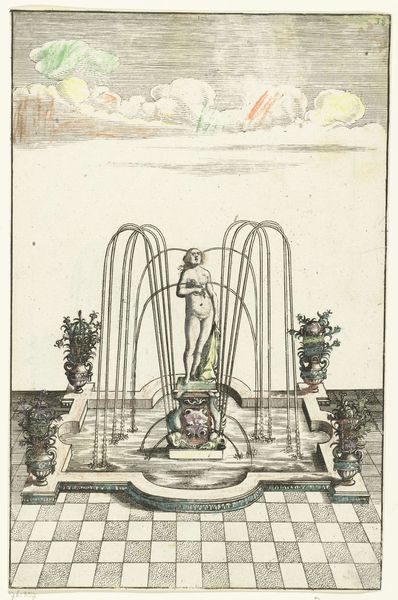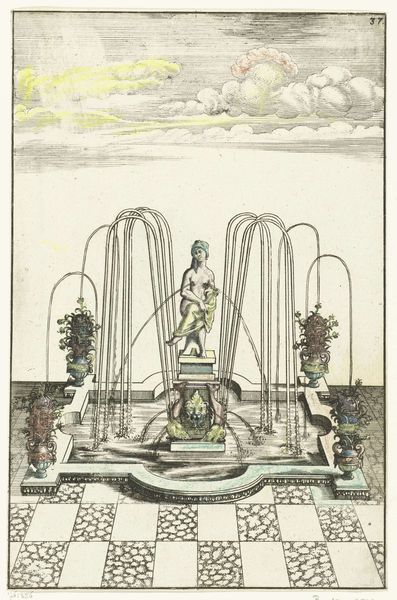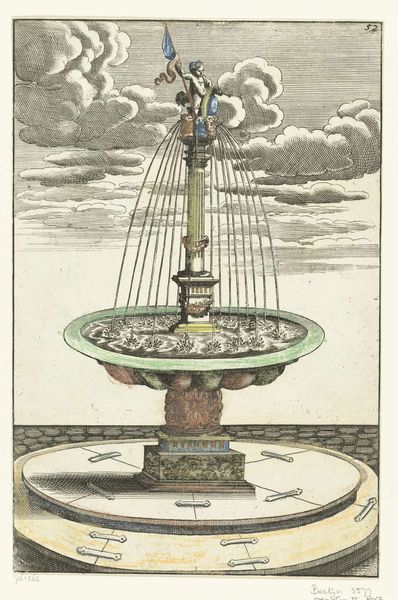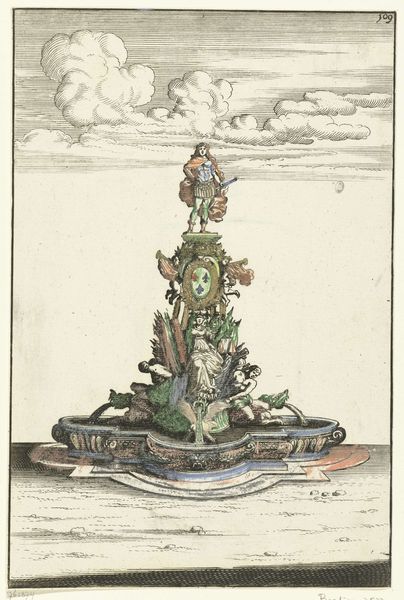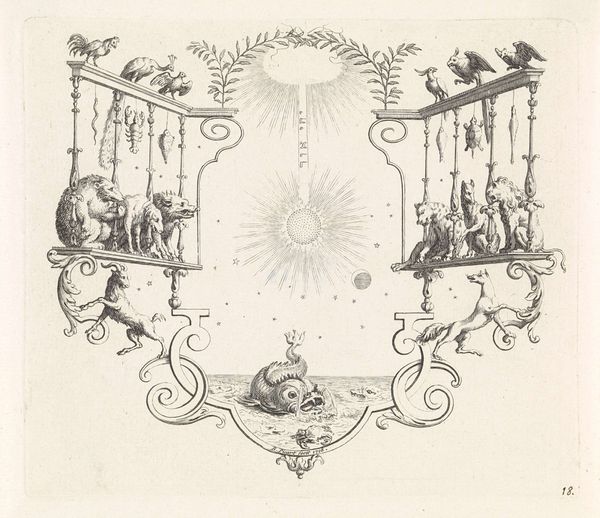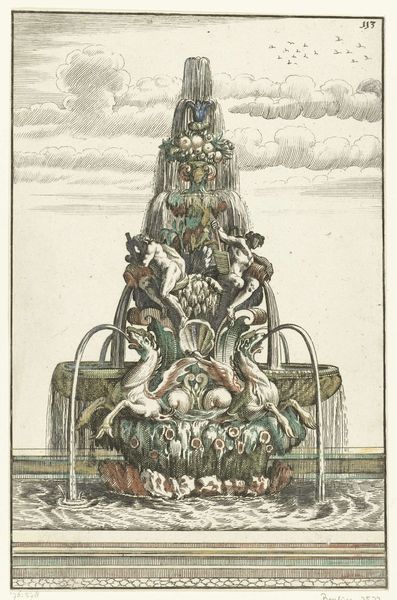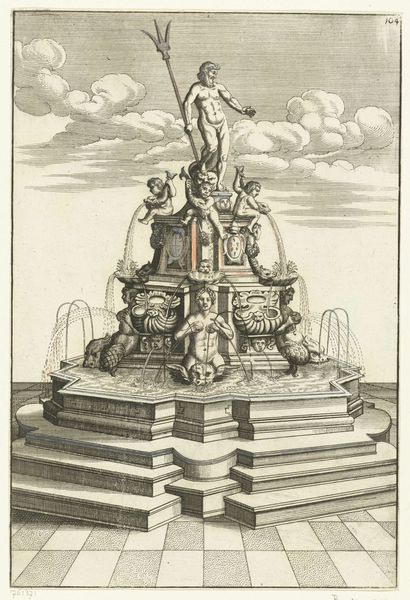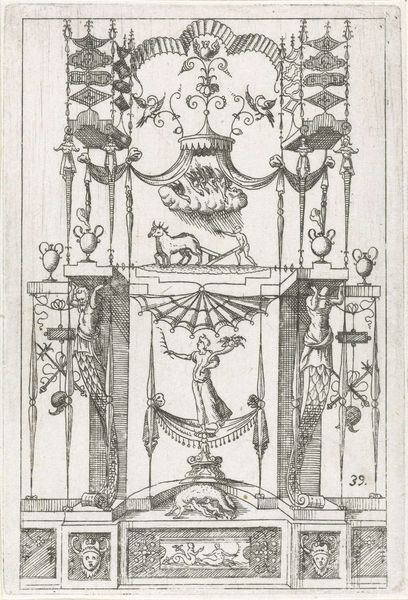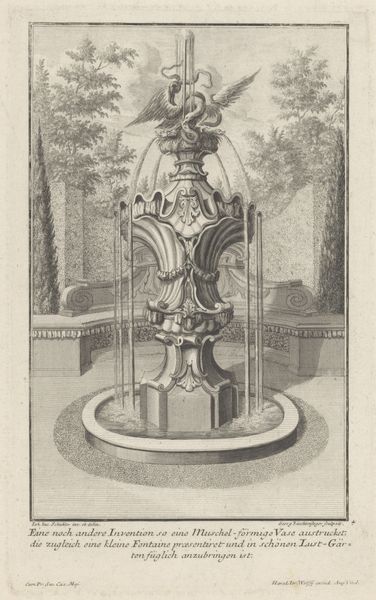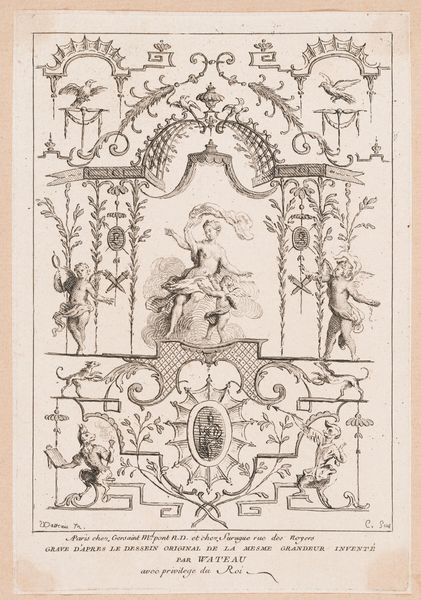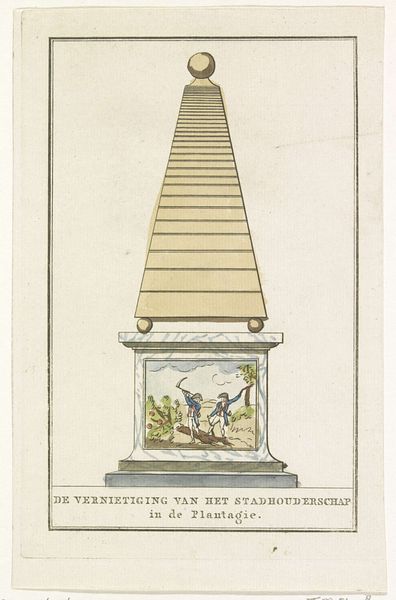
print, etching, sculpture, engraving
#
baroque
# print
#
etching
#
landscape
#
figuration
#
classicism
#
sculpture
#
engraving
Dimensions: height 267 mm, width 175 mm
Copyright: Rijks Museum: Open Domain
Curator: Here we have a print entitled “Vierkant bassin met halfronde uitstulpingen,” or “Square basin with semi-circular bulges.” It’s an engraving and etching likely dating back to 1664, created by an anonymous artist. Editor: Well, my first thought is how wonderfully impractical it seems. The little statues in the middle getting drenched! There's a playful theatricality to the architecture of water here, wouldn't you say? Curator: Indeed. The artwork presents an idealized image, encapsulating classicism and Baroque elements within a garden setting. Fountains in this era were much more than ornamentation. They reflected control, prosperity, and often carried strong symbolic value related to cleansing and purification. Editor: It makes me think of Versailles! And this idea of taming nature and bending it to human will. It’s really striking. All these meticulously placed objects and controlled water. But what’s with those face masks at the basin? Do they spout water, too? Curator: Quite possibly! Faces, masks, and grotesque features often adorn fountains and architectural elements, sometimes associated with spirits of nature or deities linked to water. It would represent nature being tamed. Also, consider the basins and urns—they signal abundance. Editor: So, it’s not just showing a pretty place but communicating this entire philosophical view. A vision of human dominance, filtered through classicism. But isn't it a little cold? Despite all the apparent luxury, there’s something... distant about it all. Curator: I see your point. There's a formality inherent in the visual language of power. That distance reminds viewers of a hierarchy. The statue with the water cascade on the head represents the submission of the common folk by the governing body, represented here through a higher form of art: the sculpture. The cascading fountain turns the water into strings that seem to connect, which is a sign of commitment to maintaining that connection by any means necessary. Editor: What a chilling notion! But there you go – a pretty garden concealing a coded message. I am more glad than before that gardens and water basins have changed so much from then on. Curator: Precisely! And in these kinds of prints, the fusion of art, engineering, and social messaging becomes remarkably clear. It mirrors what art means to us nowadays too!
Comments
No comments
Be the first to comment and join the conversation on the ultimate creative platform.
